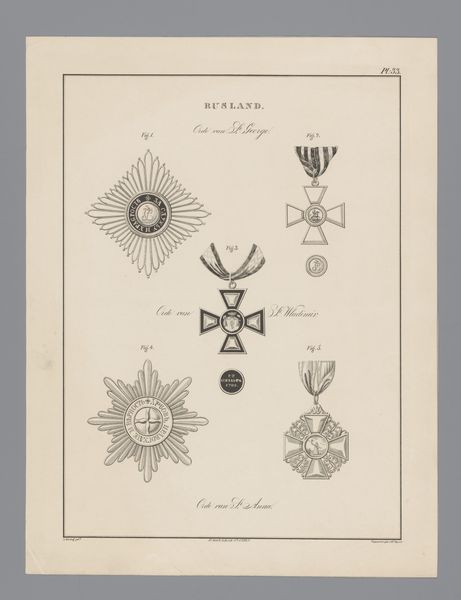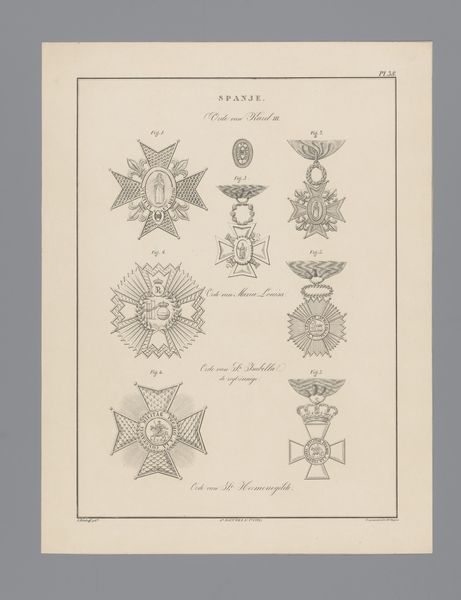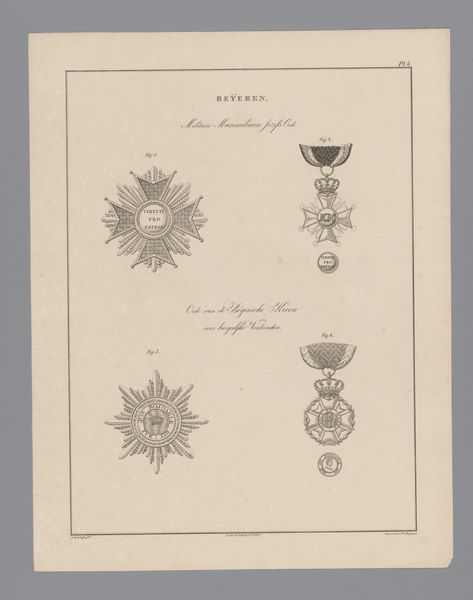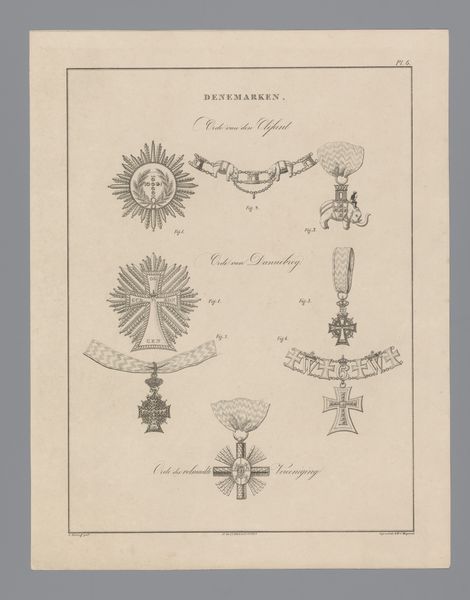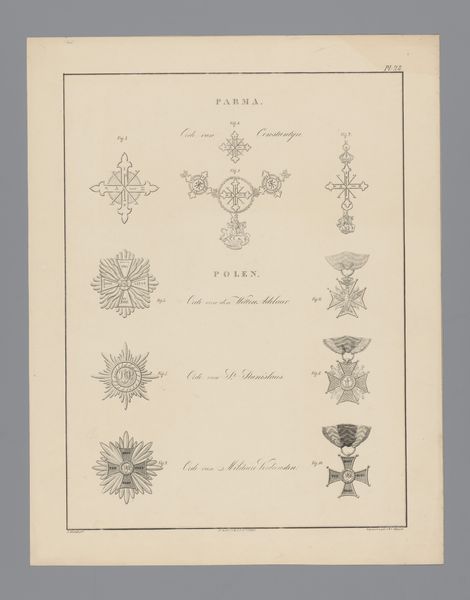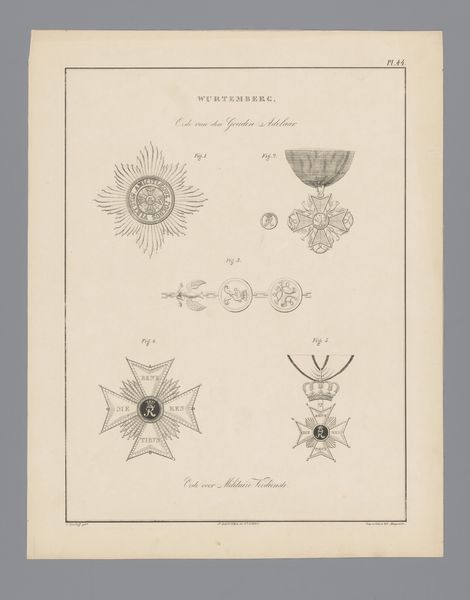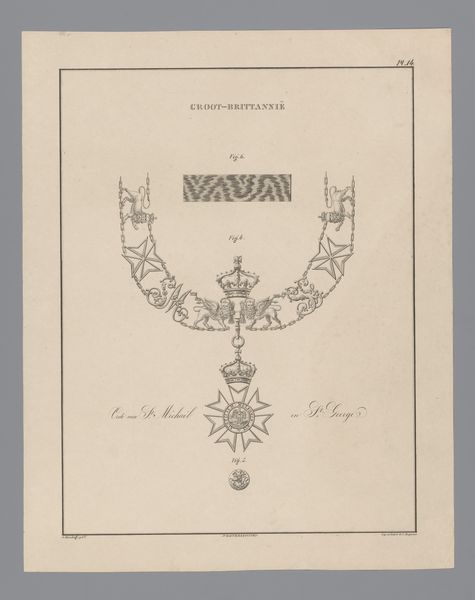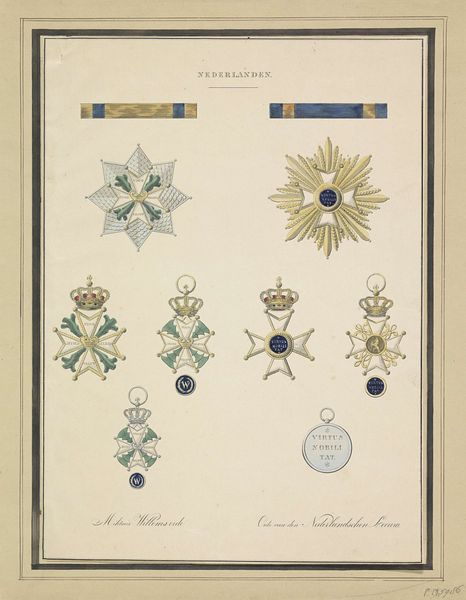
print, engraving
# print
#
geometric
#
history-painting
#
academic-art
#
engraving
#
monochrome
Dimensions: height 390 mm, width 310 mm
Copyright: Rijks Museum: Open Domain
Curator: This is an engraving from 1843 titled "Europese Ridderorden," or "European Knighthoods," by Willem Charles Magnenat, housed in the Rijksmuseum. What strikes you about this print? Editor: Well, the first thing I notice is how intricate all the designs are. They're all so different but so clearly meant to signify power and prestige. I suppose my question would be, what kind of power dynamics are at play in representing these symbols in this way? Curator: Precisely. This image isn’t just a neutral depiction. It was created during a time of intense social stratification and nationalistic fervor. Consider the historical context: who commissioned these orders? Who benefited from their distribution? Were they tools of oppression, or were they also symbols of unity in a fragmented Europe? And furthermore, who gets to represent these objects in print, and for what purpose? Editor: I hadn't thought about it that way, but that's a very important point. By cataloging and displaying these "knighthoods," the artist, and the institution, reinforces a certain historical narrative. Curator: Absolutely. Each symbol carries a specific weight, a history of privilege and exclusion. By reproducing them, Magnenat participates in the visual language of power, and it’s crucial we analyze what that participation means, both in 1843 and today. This is where history and contemporary power intersect and demand our scrutiny. Editor: This makes me think differently about what I’m actually looking at, not just the symbols themselves, but their place in a larger sociopolitical conversation. Curator: Indeed. It's not merely about admiring the craftsmanship but critically examining the ideologies embedded within these objects and their representation. The work of art reflects the values of its time. Always question the dominant narratives. Editor: Thank you; I see it much more clearly now. I'll certainly be thinking about this piece—and others—in a more critical way going forward.
Comments
No comments
Be the first to comment and join the conversation on the ultimate creative platform.

